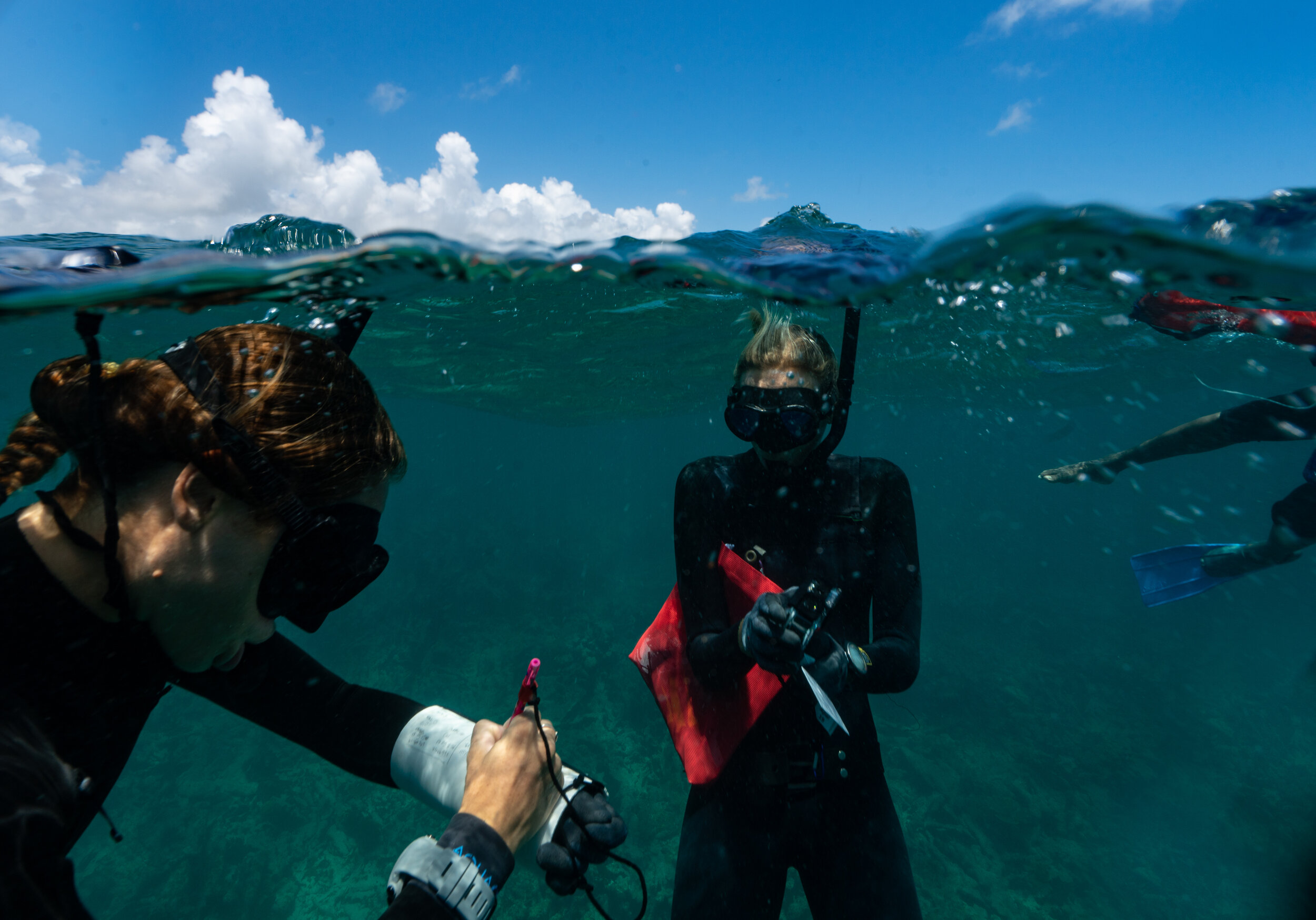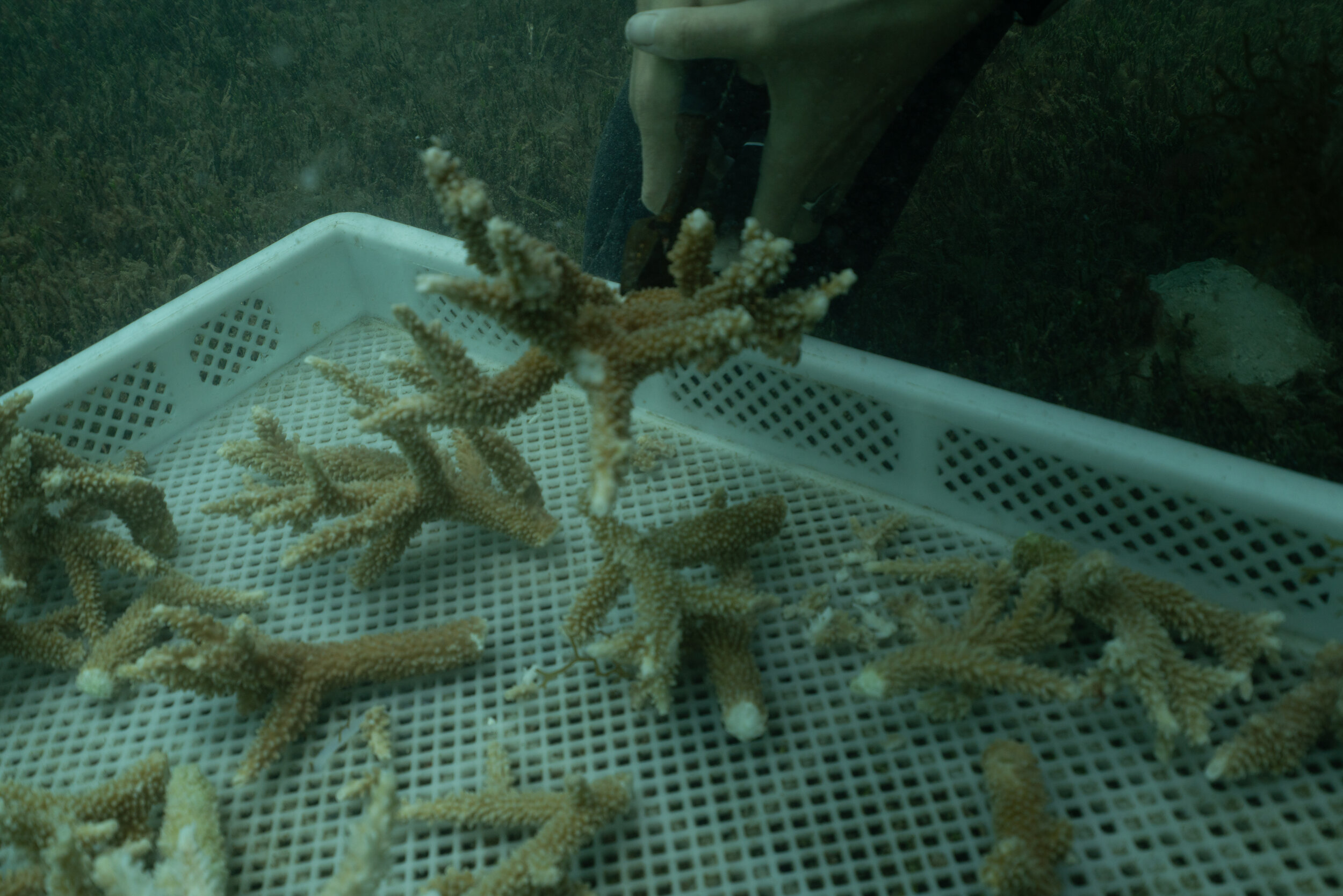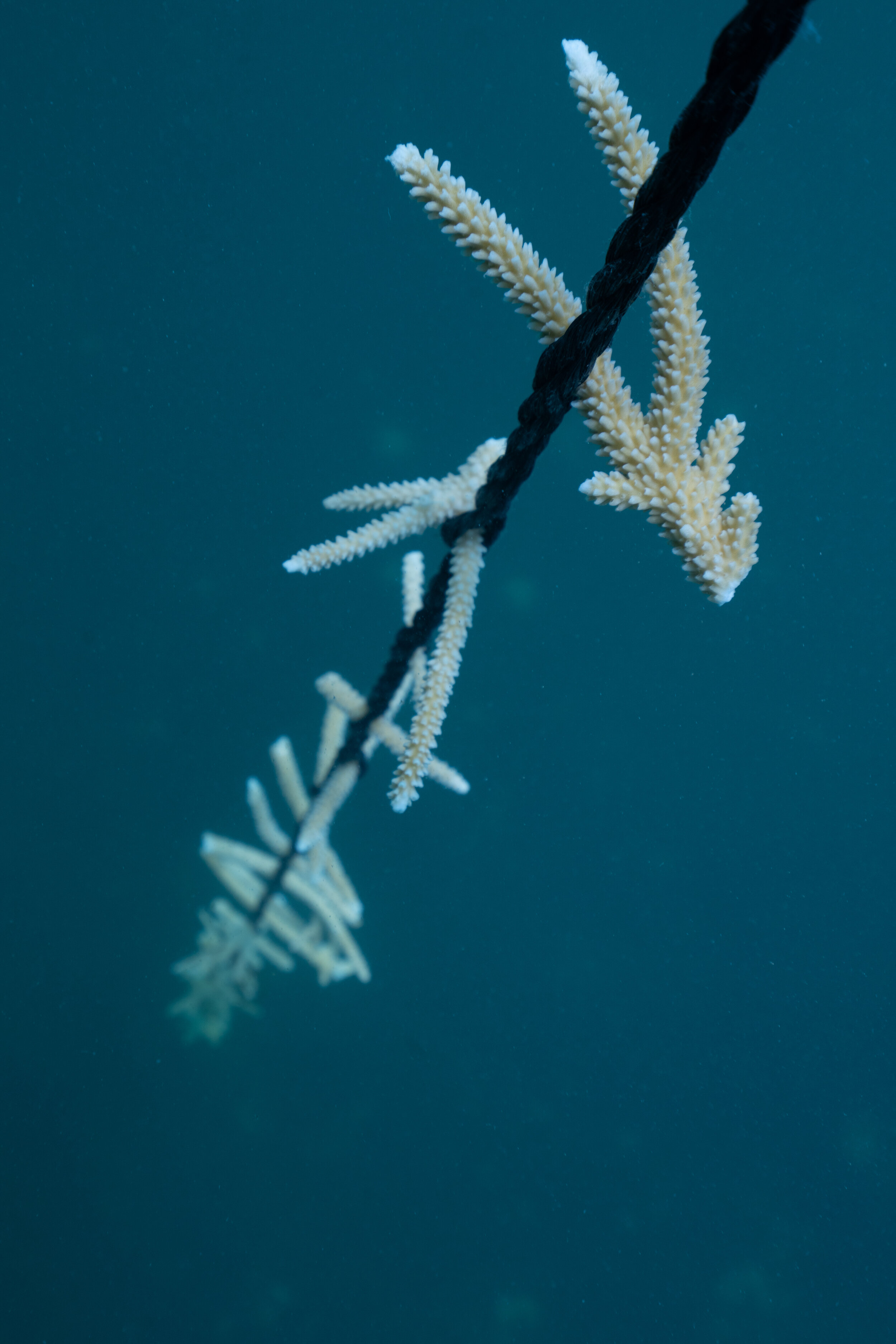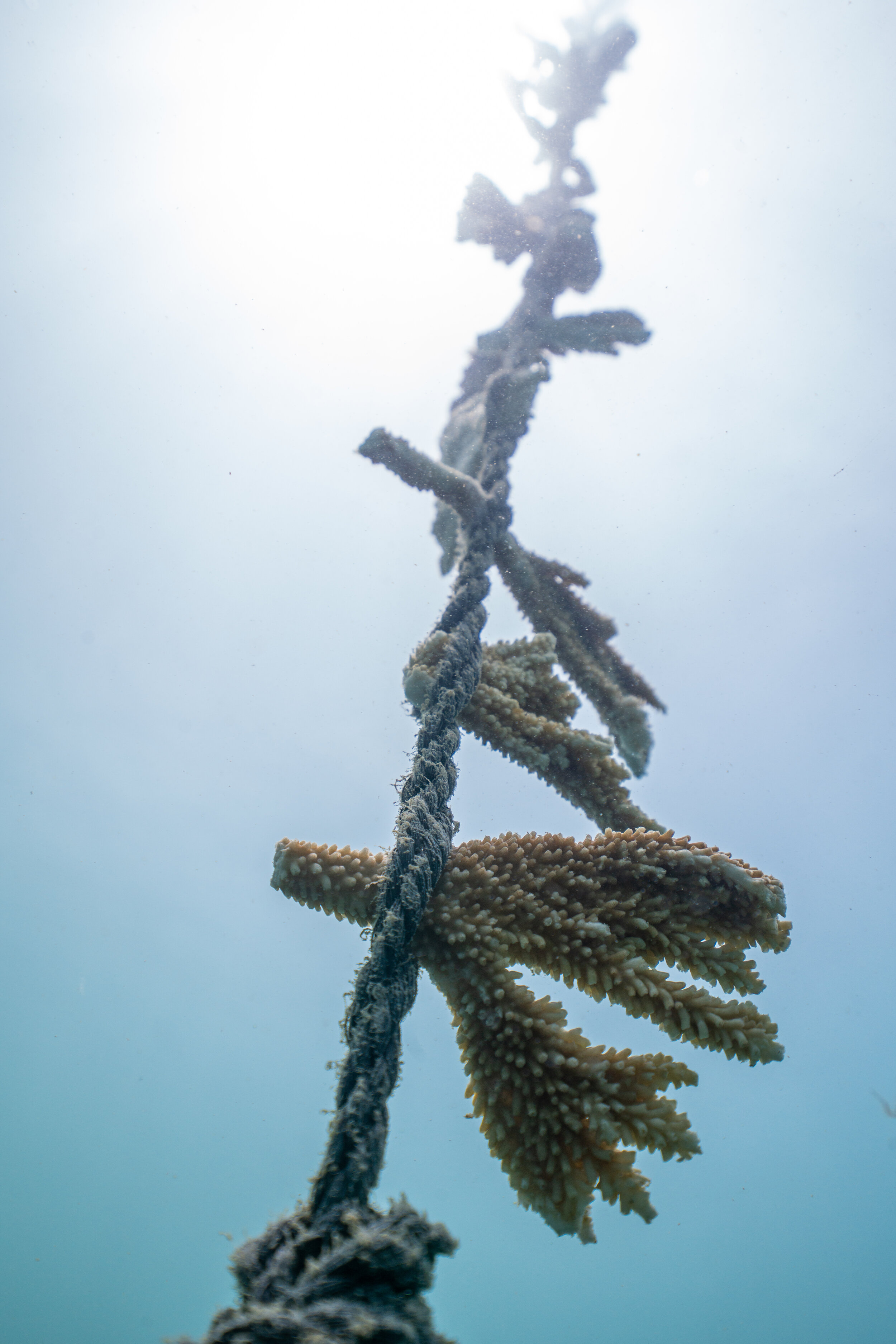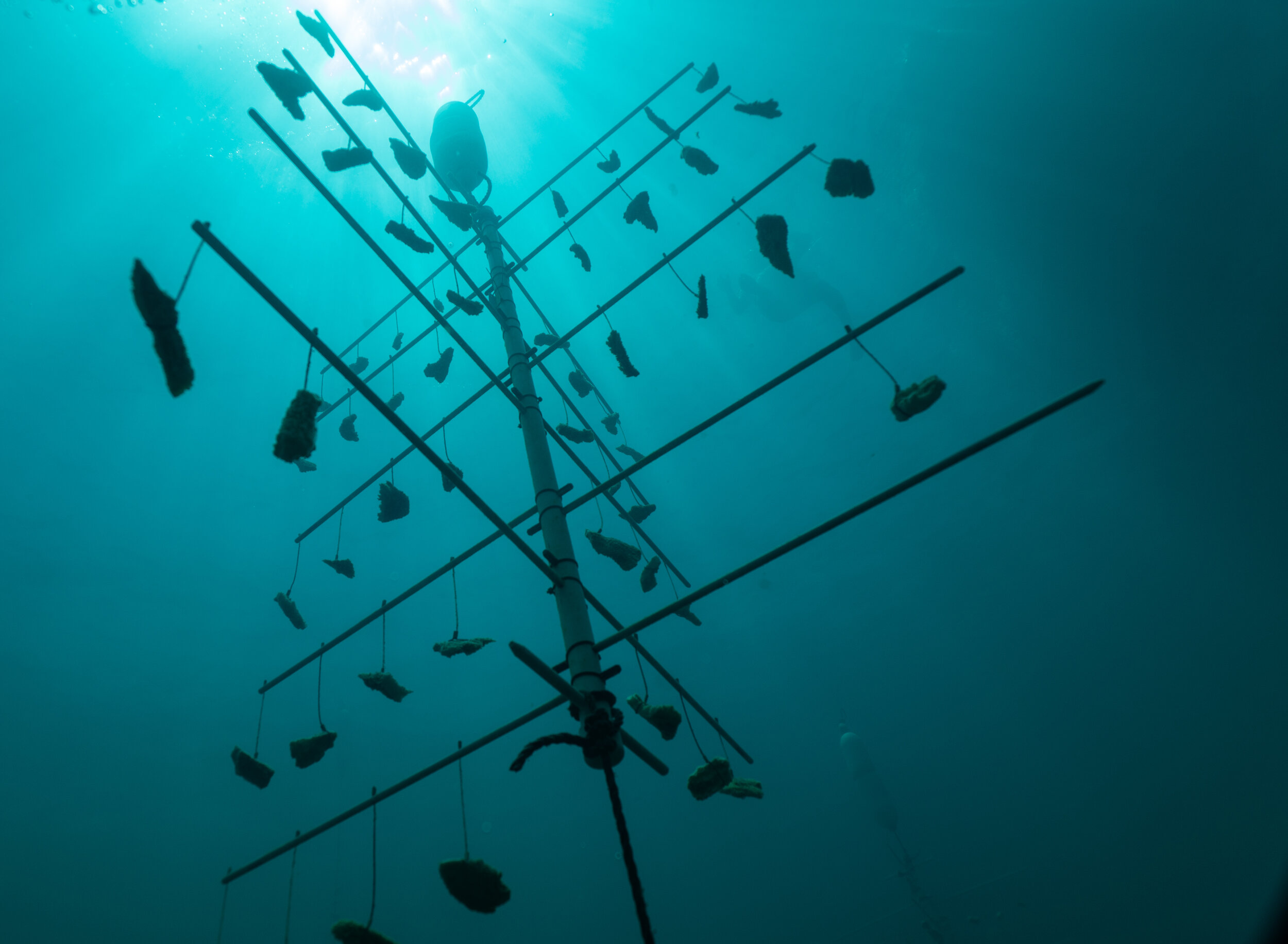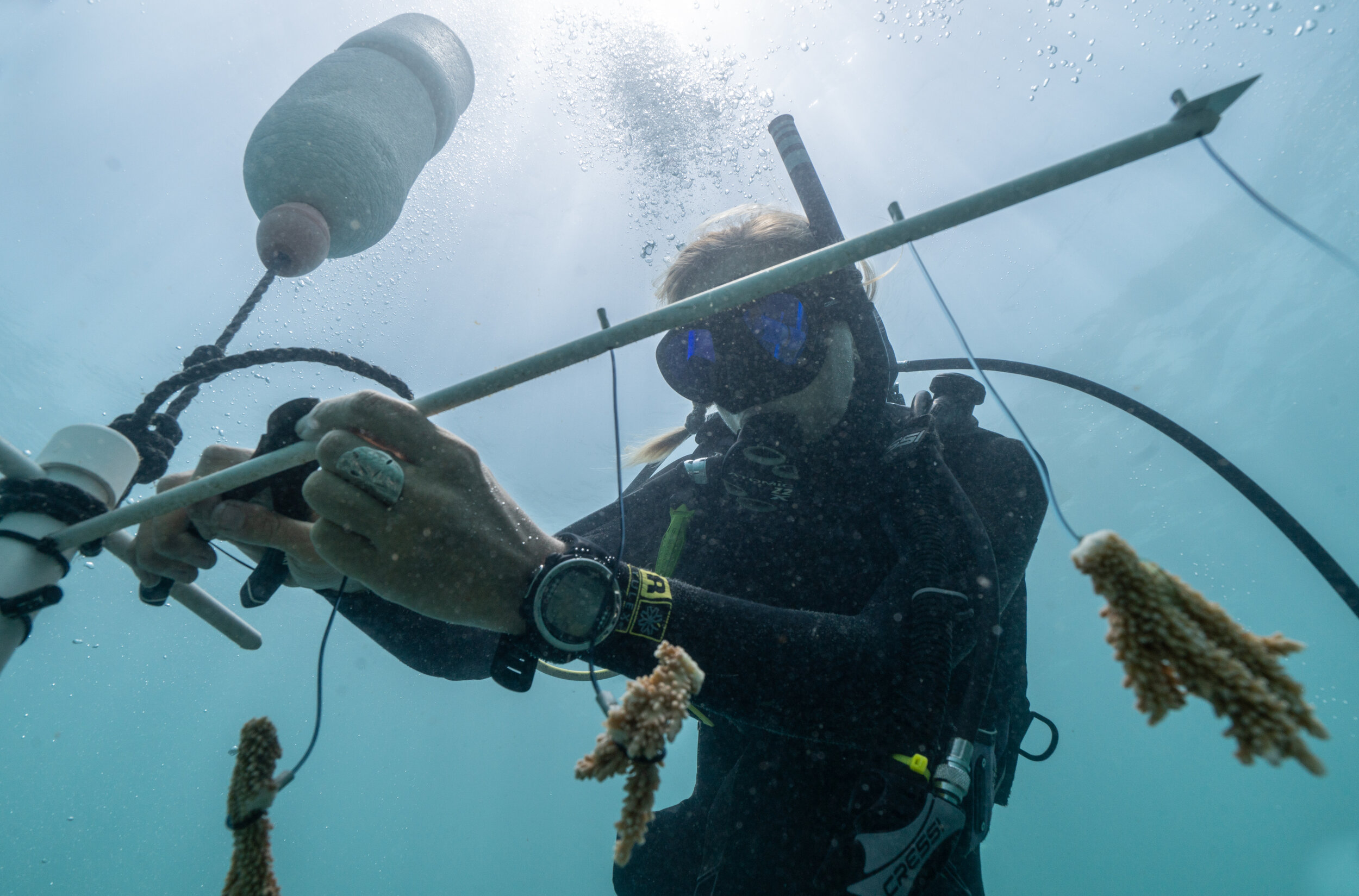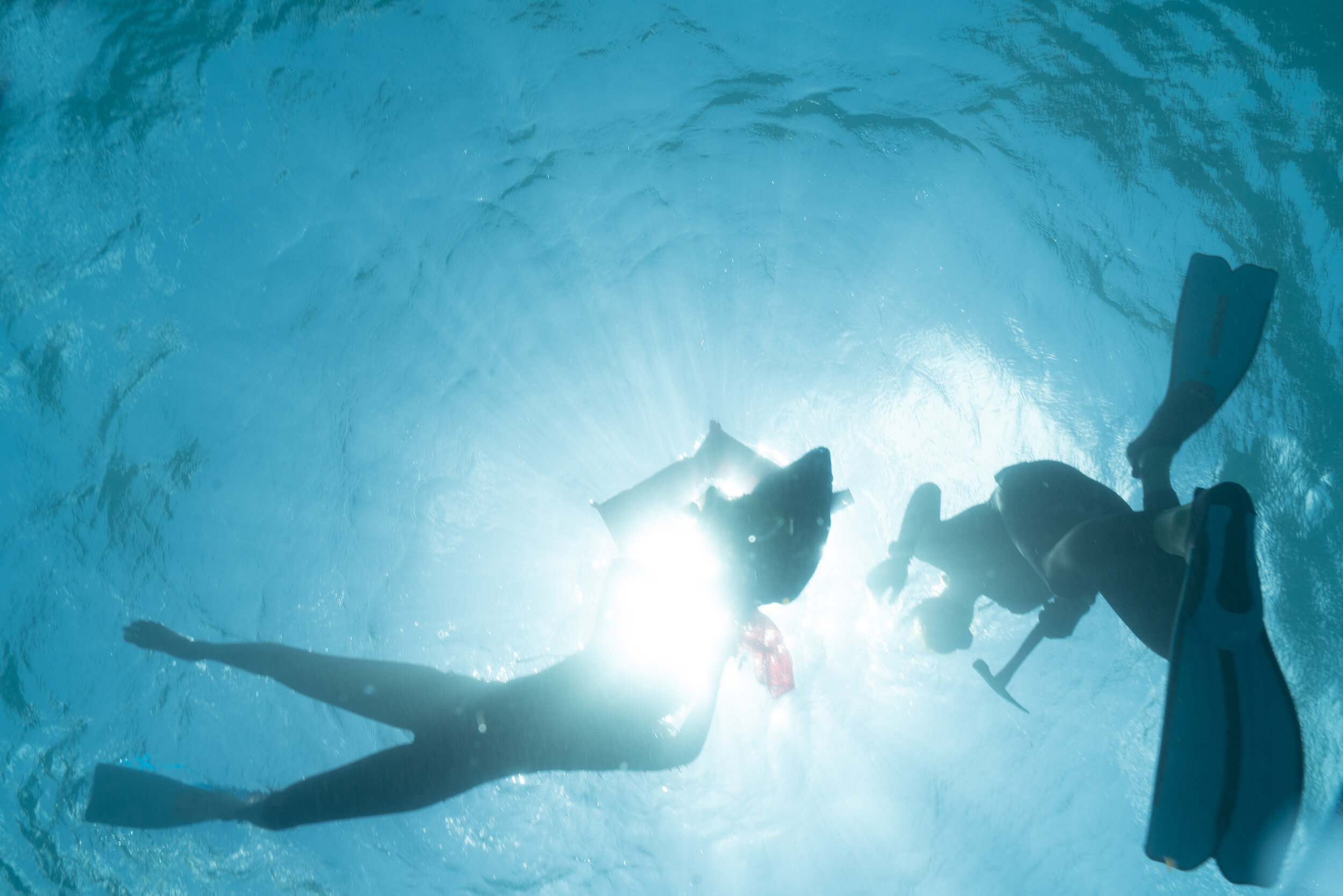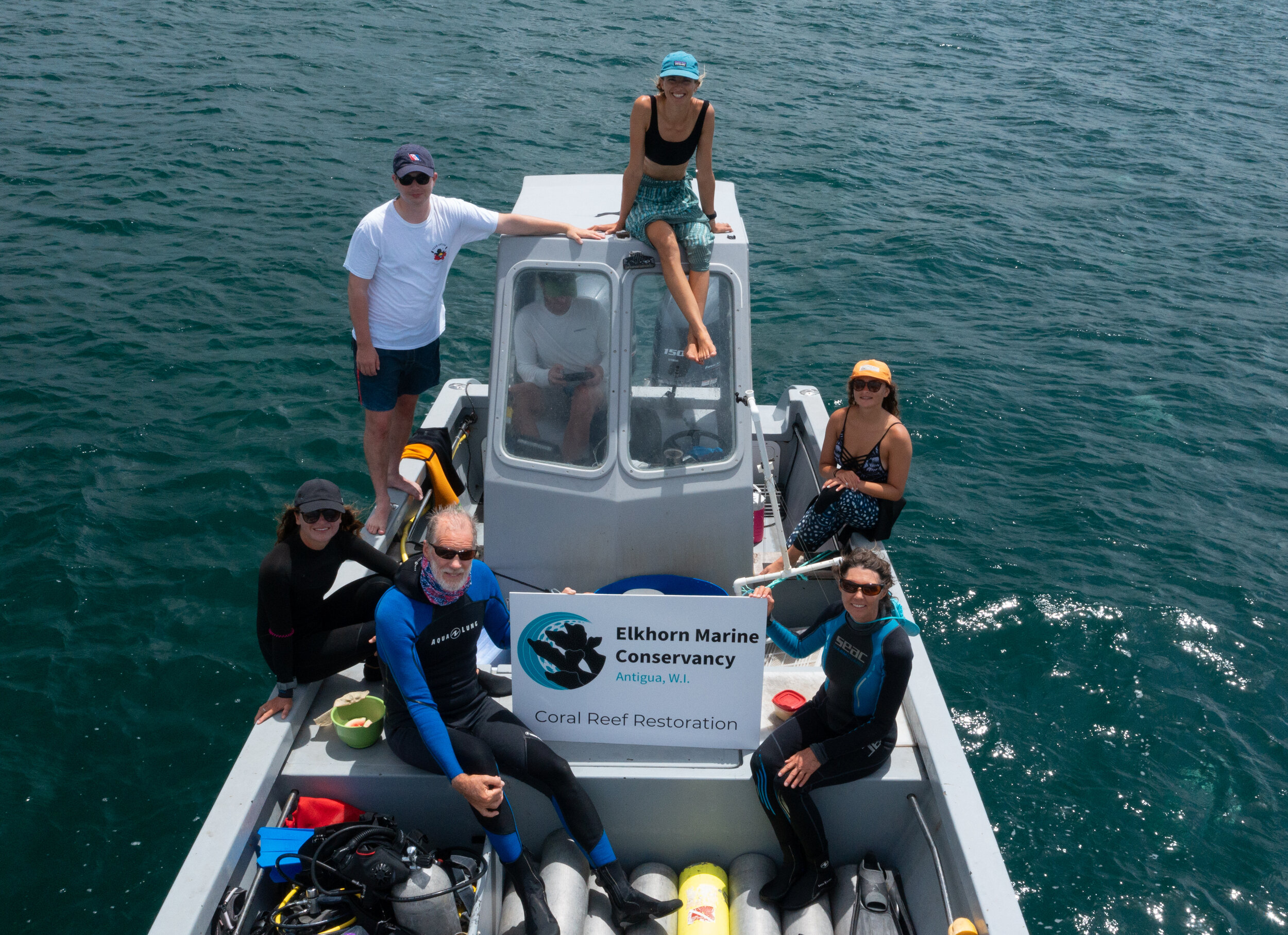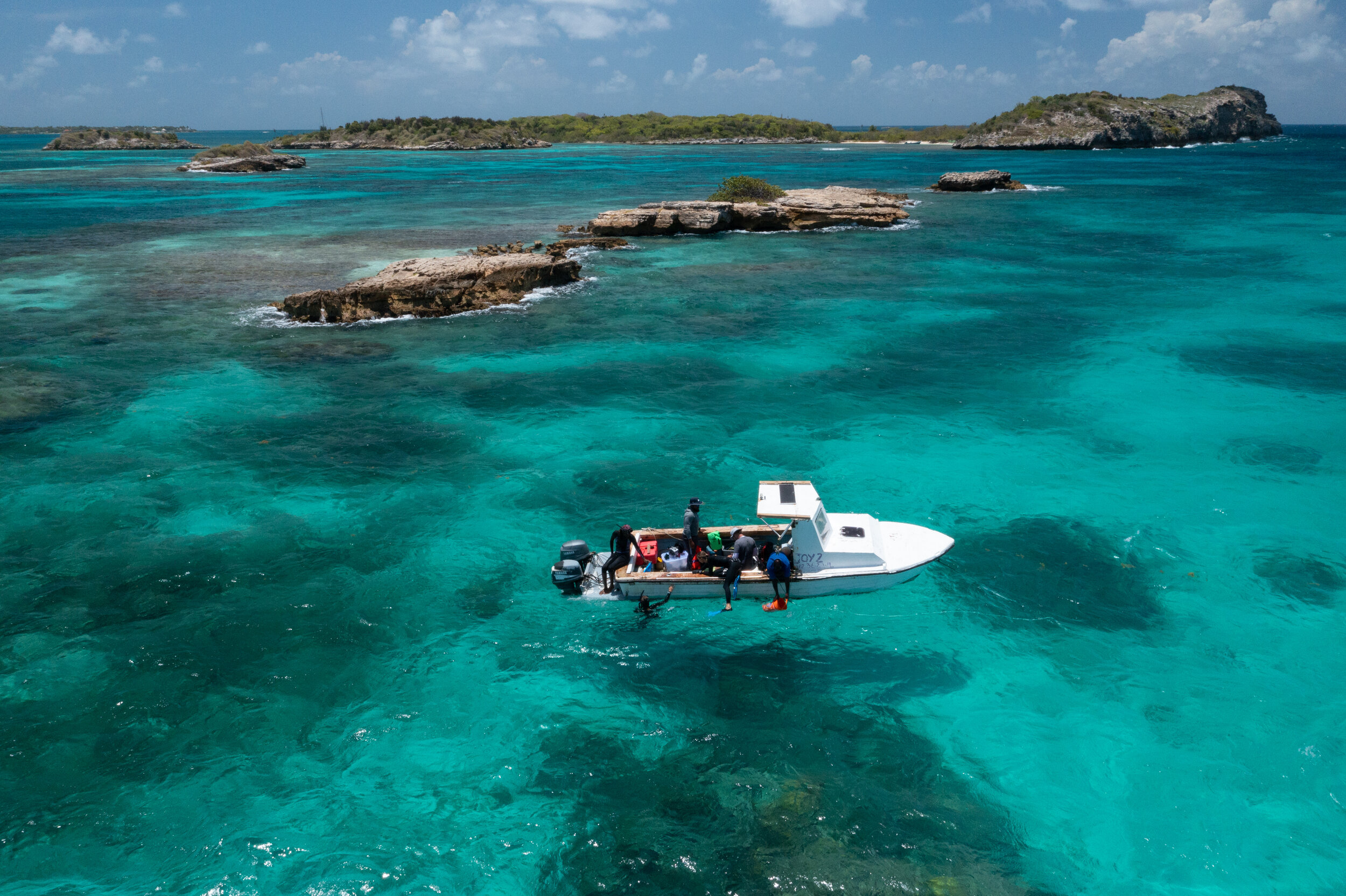
Coral Reef Restoration
Reviving our reefs through active restoration
Coral reefs are in global decline and face ever-increasing threats including pollution, overfishing, habitat destruction, disease, and climate change. As reefs are lost in Antigua, so are their essential services including coastal protection, fisheries production, and tourism and cultural value. To counter these losses, we are implementing active coral restoration practices that have been successful in restoring reefs in a number of Caribbean countries. Furthermore, we are testing new and innovative techniques to increase the efficacy and scalability of coral restoration.
What does coral restoration entail?
Collect
Small fragments of live coral are collected from healthy populations in the region.
Grow
Coral fragments are assembled in our underwater nursery where they are allowed to grow in protected conditions.
Outplant
Once large enough, coral fragments are outplanted onto degraded coral reefs.
Monitor
Outplanted sites are monitored over time to measure restoration impact and enhance coral survival.
Our first coral nursery is now live!
Thanks to our dedicated team of scientists, board members, advisors and volunteers, our first coral nursery is now operational! Our York Island nursery currently holds over 1000 coral fragments from 3 different reef-building coral species. Our team collected fragments (small pieces of live coral) from 36 genetically distinct corals and hung them on one of our 42 nursery structures, which include PVC coral trees and vertical ropes. In the coming months, our team will expand this nursery to incorporate additional nursery structures to hold more fragments. We will also be establishing a second nursery near Green Island to serve as the project’s demonstration and education site. Corals will grow in the nursery for 8-12 months before being replanted onto degraded reefs.
Rebuilding resilient reefs
We’ve lost more than half of all Caribbean reefs. So why would planting more coral help solve the issue? Aren't these corals faced with similar or more serious threats due to climate change? The answer lies in propagating corals that have previously survived harsh conditions and human disturbances. By collecting and growing fragments from these survivors, we hope to replant a reef that can withstand current and future threats.
Reef restoration requires more than just planting coral
-

Collaborative Management
Through collaboration with government authorities, communities, fishers, tour operators, coastal resorts and property owners, we strive to inspire positive behavioral change and facilitate effective marine management that will reduce local threats to the reef.
-

Monitoring, Research and Innovation
Working with our regional and local scientific partners, we conduct research and develop methods that will improve restoration outcomes and coral resilience to global future threats. We will evaluate restoration success through continued monitoring of nursery corals, outplanted ecosystems, and indicators of human impacts such as water quality.
-

Education and Awareness
To increase environmental stewardship and awareness, we are developing educational programs for community members, employees, students and volunteers. Programming include guided tours, virtual learning, and in-water volunteer opportunities and internships.
How can restoration benefit our reefs
and our communities?
Antigua has an incredible potential to benefit from coral restoration. Reef fauna and flora, including reef fish, lobsters, turtles and sharks benefit from the habitat structure and complexity which restored reefs provide. Antiguans rely on healthy reefs and fish stocks for coastal protection, local and nutritious foods, leisure and cultural identity. In addition to enhancing the health and resilience of coral reef ecosystems and the many communities that depend on them, restoration can provide a platform for educational programs and a destination for snorkelers and divers. There are innumerable sites that are in need of restoration along Antigua’s coastline - we are dedicated to expanding our operations to help communities across the nation.
Photo credits: Aquafilms (Roddy Grimes-Graeme), Molly Wilson & Christal Clashing






